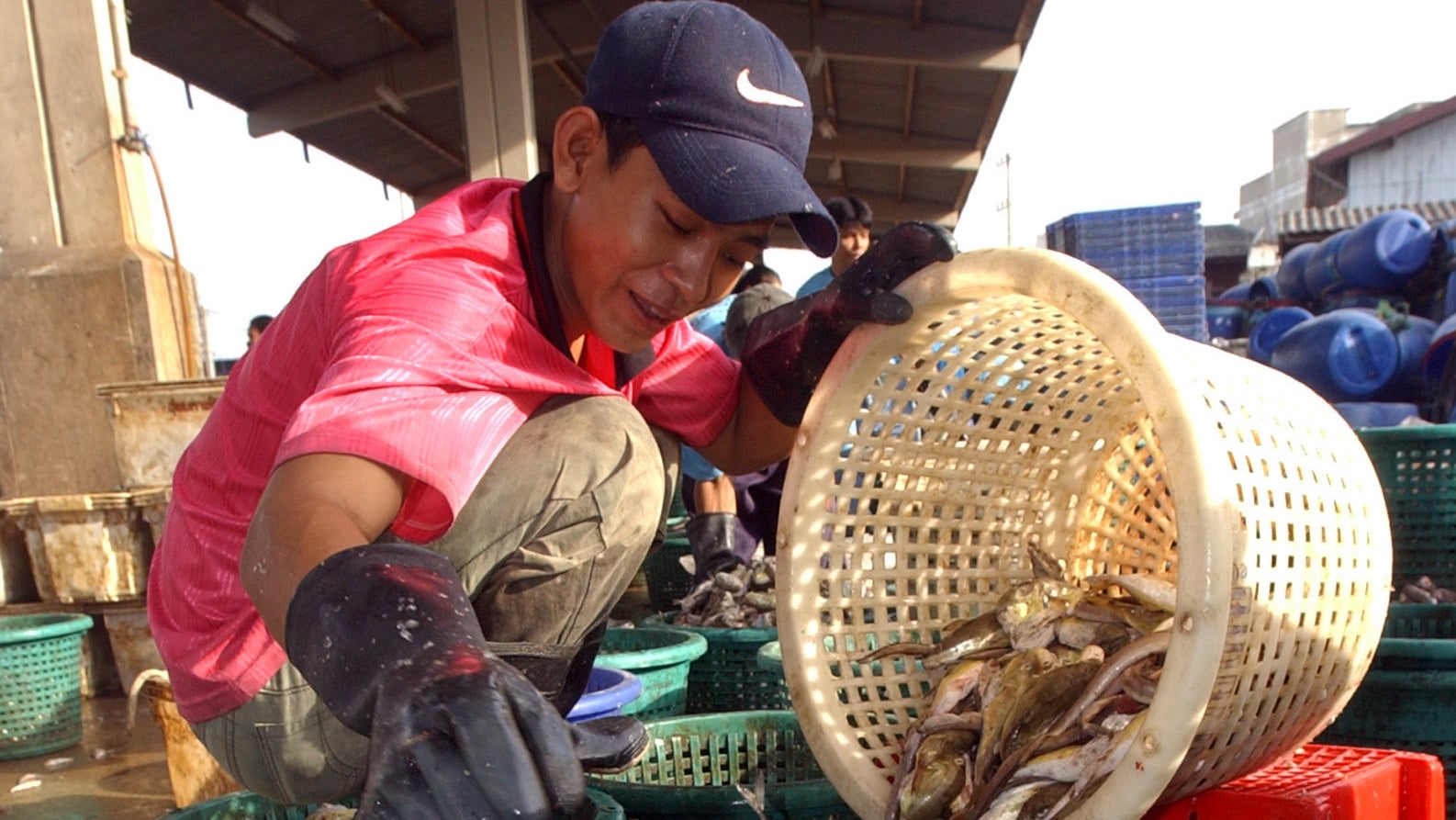If your mackerel came from Thailand, an enslaved migrant probably caught it
Thailand’s fishing industry is a global powerhouse. It exports around $7.3 billion worth of seafood annually, making it the planet’s third-biggest exporter after China and Norway. But the length of its coastline alone isn’t what got Thailand there. Instead, it probably has more to do with the fantastic profitability of its business model. Specifically, the labor inputs: brutally underpaid laborers, and often outright slavery.


Thailand’s fishing industry is a global powerhouse. It exports around $7.3 billion worth of seafood annually, making it the planet’s third-biggest exporter after China and Norway. But the length of its coastline alone isn’t what got Thailand there. Instead, it probably has more to do with the fantastic profitability of its business model. Specifically, the labor inputs: brutally underpaid laborers, and often outright slavery.
Nearly all of Thai long-haul fishing vessels are crewed by migrants from neighboring countries, says a new report from the Environmental Justice Foundation (pdf)—many of whom are trafficked. They do backbreaking work for as many as 22 hours a day, for little or no pay. At sea for five or more months at a time, migrants have nowhere to escape to, and are sometimes moved from boat to boat while at sea to keep them captive.
The threat of violence is constant. One escaped migrant tells of captains beating them with a stingray tail (pdf, p.61); others tell of torture and even murder. One Thai fisherman saw a captain execute his 14-man crew; it was easier than paying wages.
A booming economy sandwiched between much poorer neighbors—Laos, Cambodia and Myanmar—Thailand is now a major destination for human trafficking (pdf). But the Thai authorities are doing little, or are even taking a cut. This reluctance to protect migrants goes all the way to the top, as a former commander in the Thai marine police told NPR. “[The government] says it’s too many and will affect the stability of the country,” said Surapol Thuanthong. ”So they don’t do anything.”
High demand for migrant fisherman isn’t simply because pay is optional. Thailand long ago overfished its own waters. Now trawlers must travel much further. But even in other countries’ waters, the return on investment is falling as fish grow scarcer.
Unsurprisingly, native-born Thais don’t want these jobs. The industry faced a labor shortfall of around 10,000 workers in 2011, according to EJF. Instead of paying higher wages to attract local workers, Thai fishing syndicates will spend $3oo-1,000 per migrant (pdf), usually to immigration brokers who lured the migrants with the promise of formal jobs.
And Americans are benefiting from this slave labor. The US imported $2.5 billion in seafood from Thailand in 2012 (though a lot of that is shrimp and tuna, which aren’t caught by slave-labor trawlers). More than one-fifth of America’s mackerel and sardines came from Thailand last year, as did 36% of fish balls and fish cakes.
That might not be the case for long. The US State Department will soon release its annual “Trafficking in Persons” report. In last year’s report, it found that the Thai government does not fully “comply with the minimum standards for the elimination of trafficking” (pdf., p.339), which earned it a “Tier 2 Watchlist” categorization, the second-worst grade a country can get.
The Thai government is not immune to the criticism from the US and activist groups. It unveiled a plan to stamp out human trafficking in March, but it focused primarily on child beggars and women forced into the sex trade; no mention was made of fishermen. And with the country’s seafood business continuing to buoy its exports, there’s little hope that Thailand will fully clean its decks any time soon.